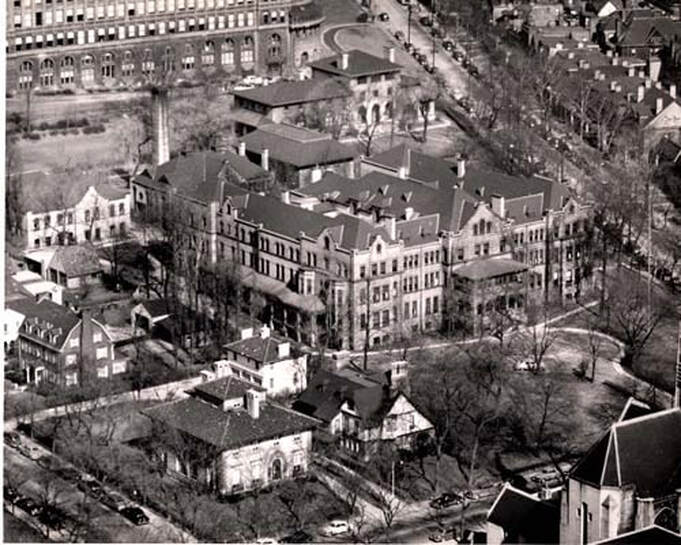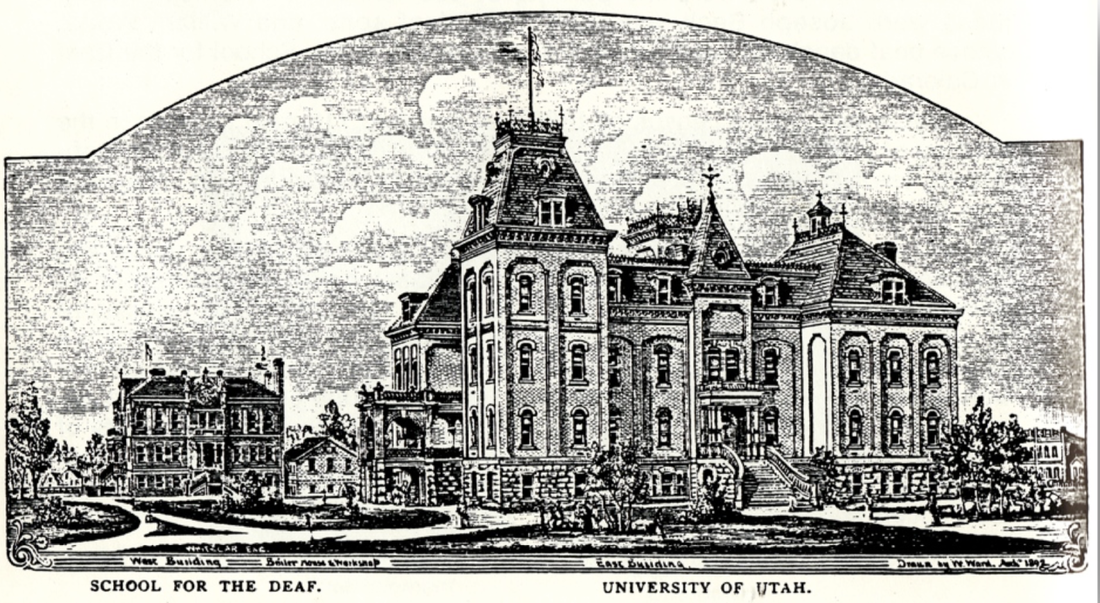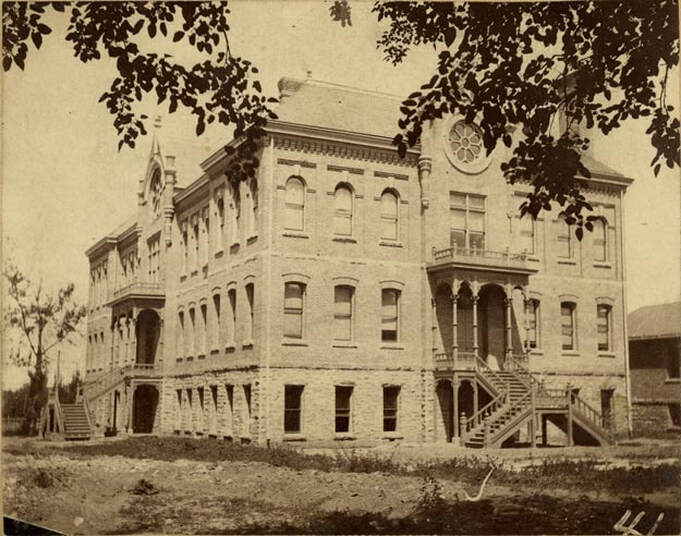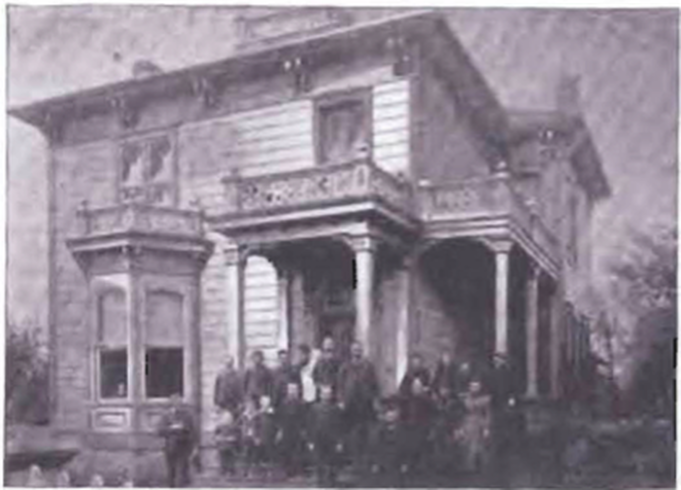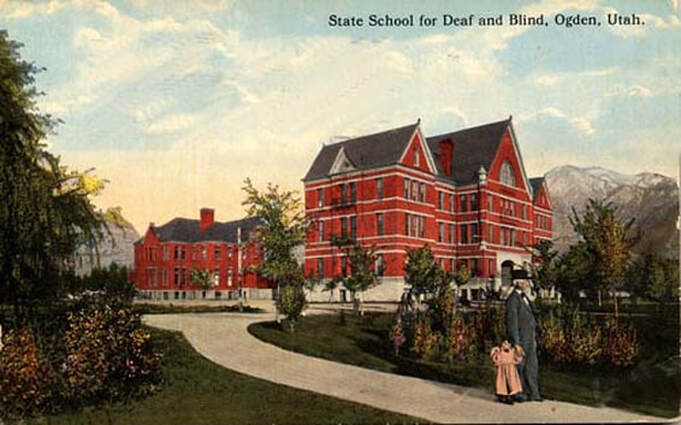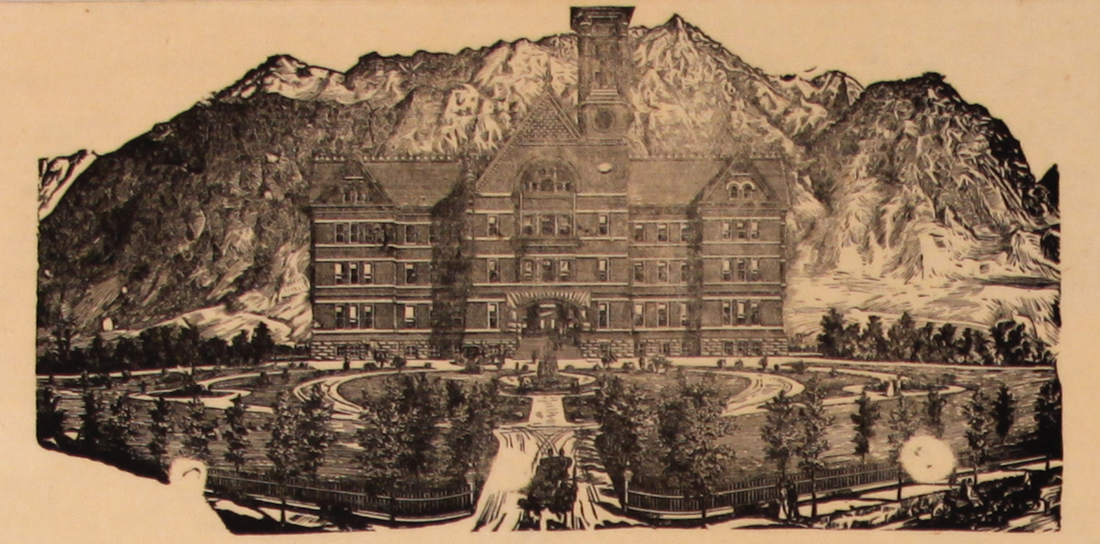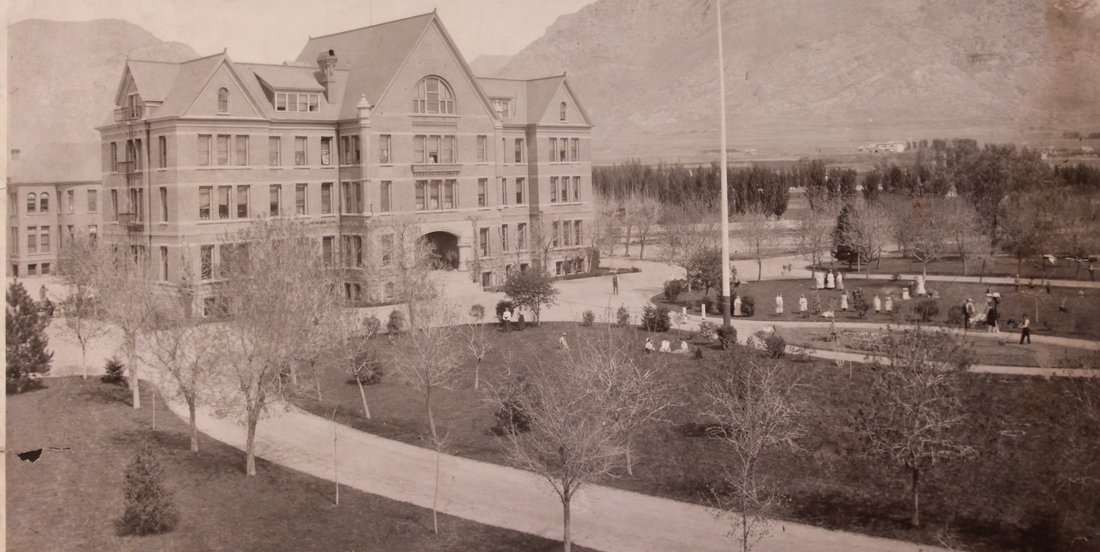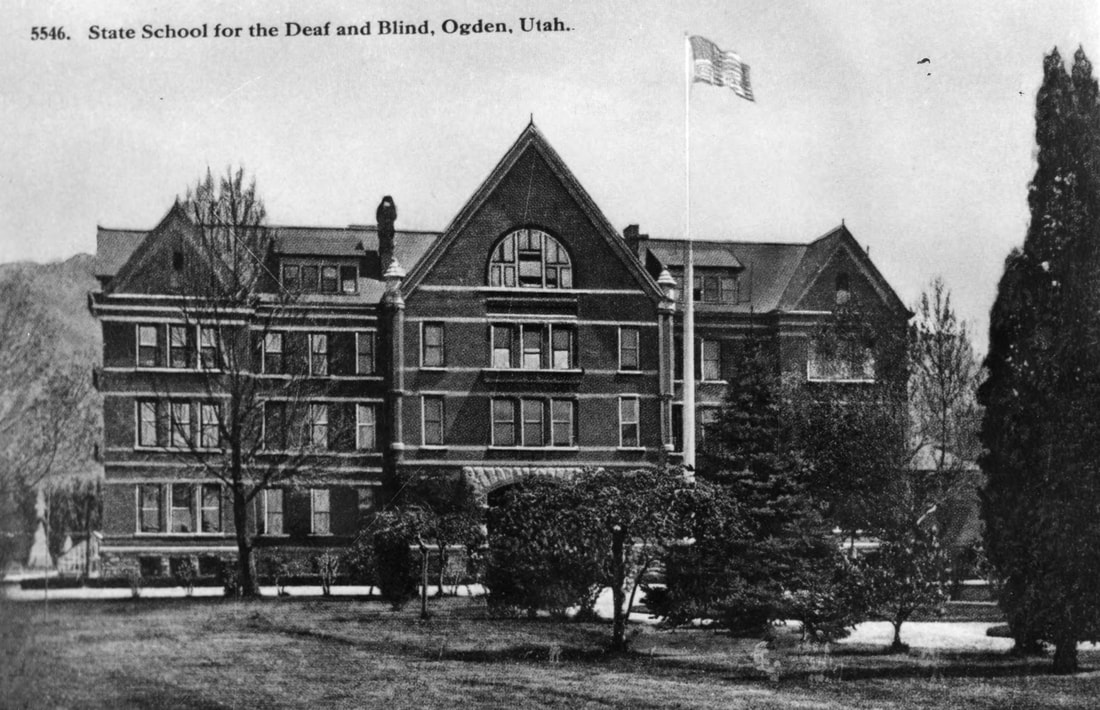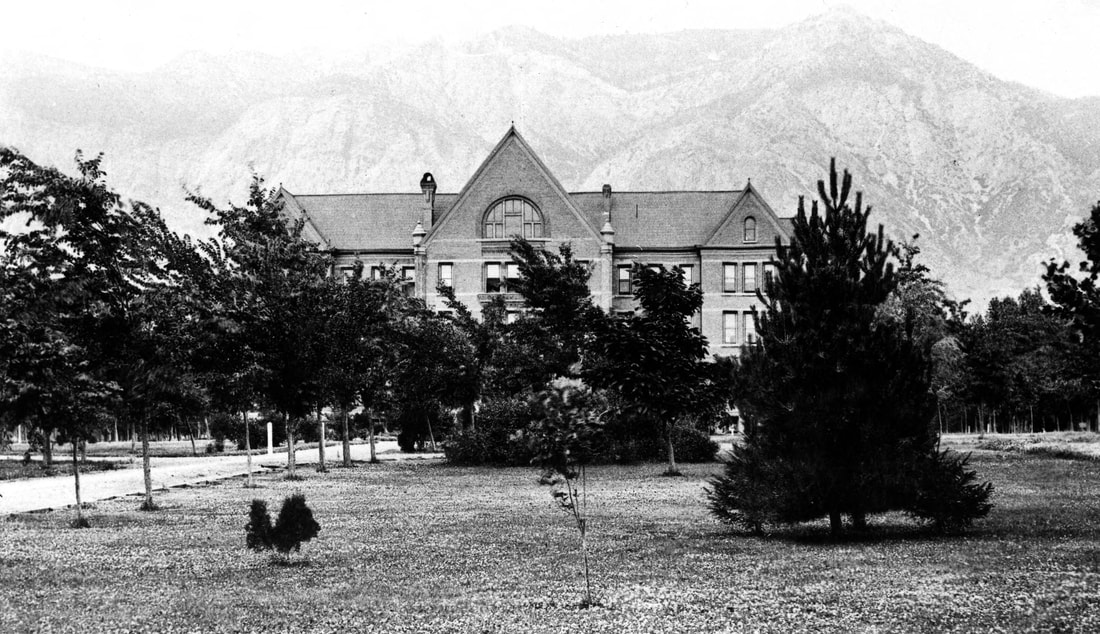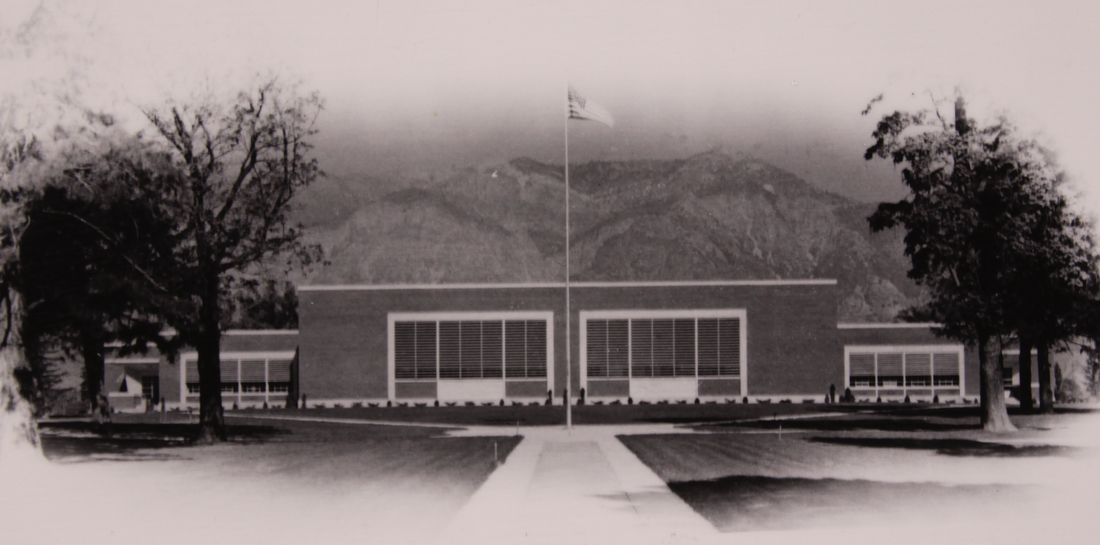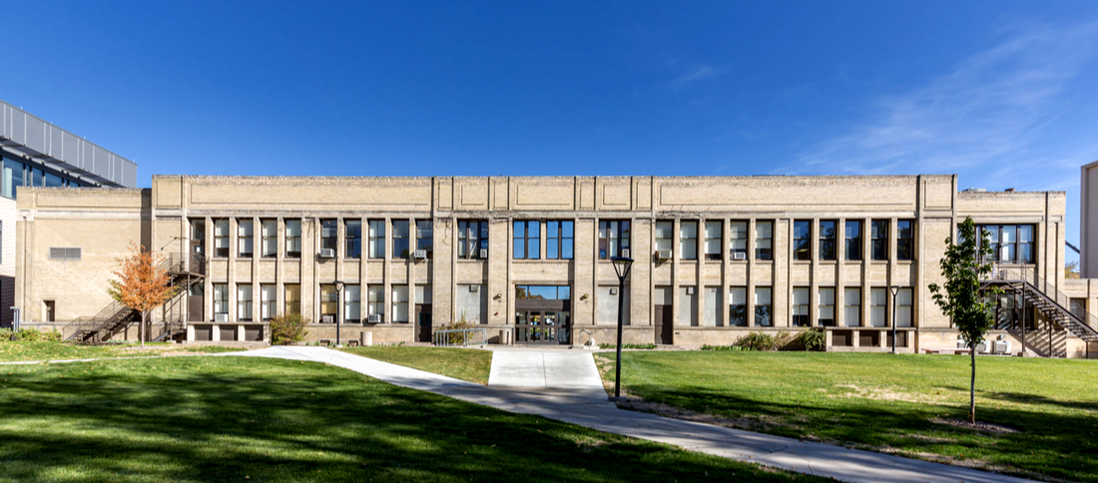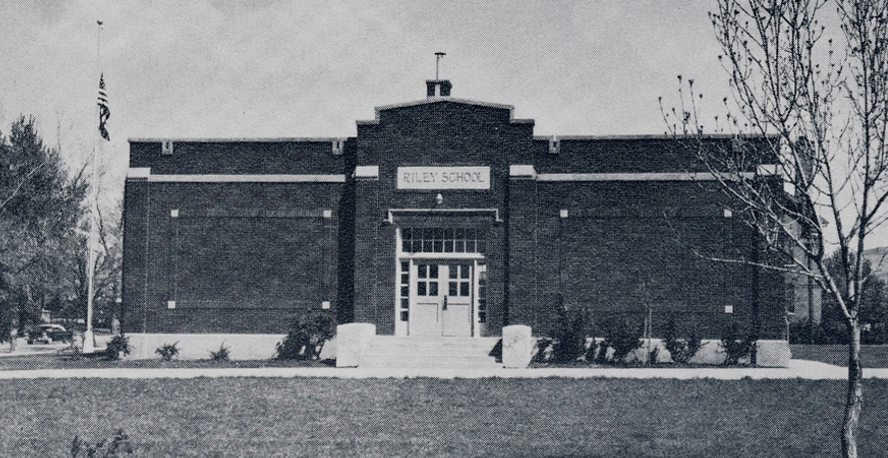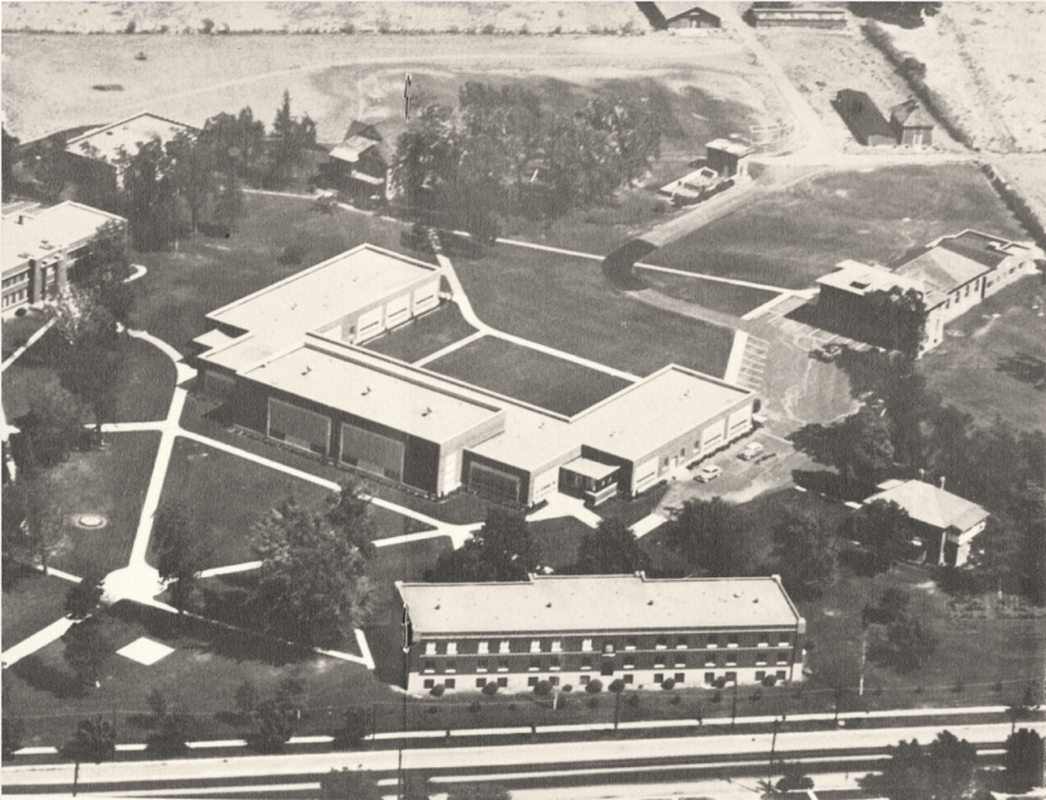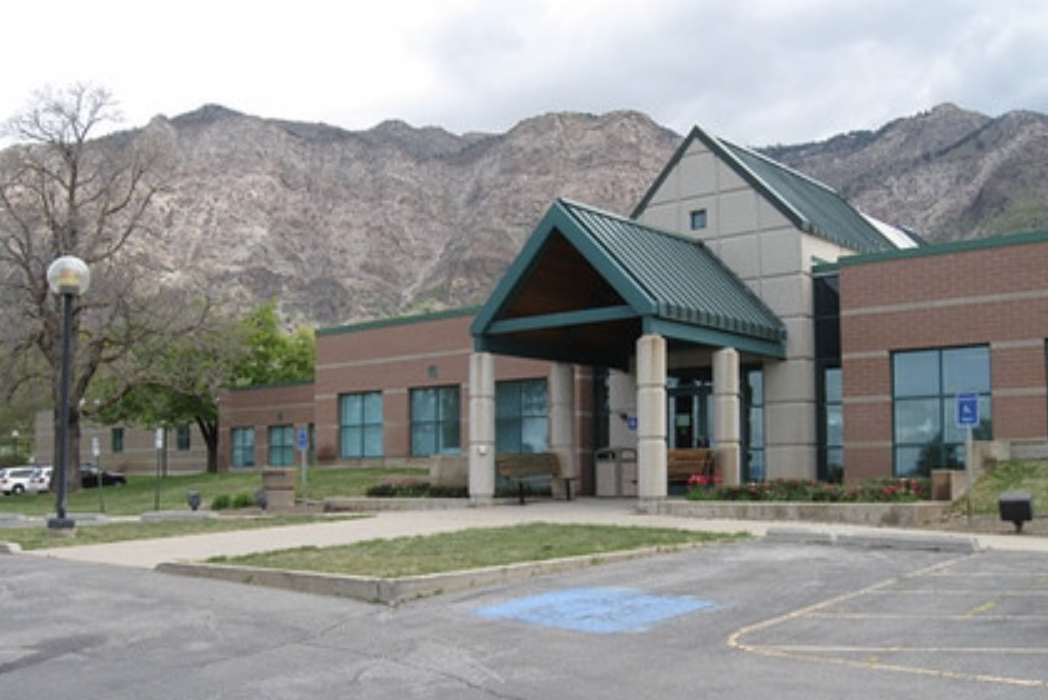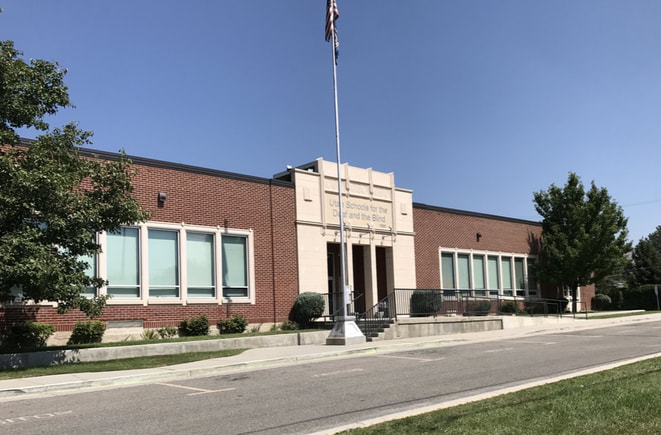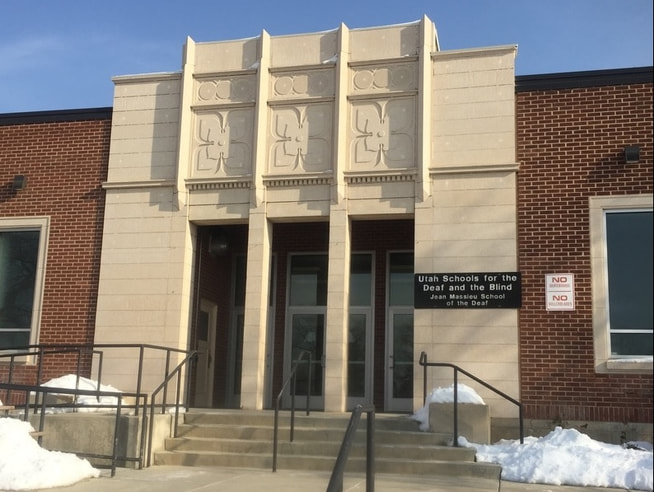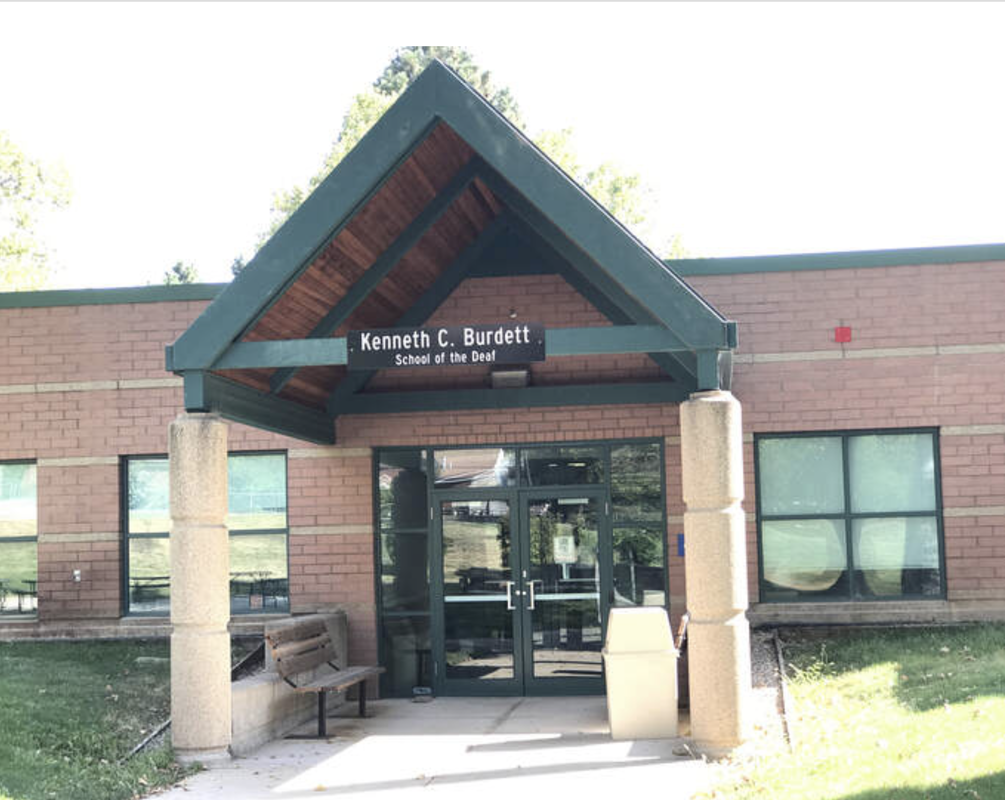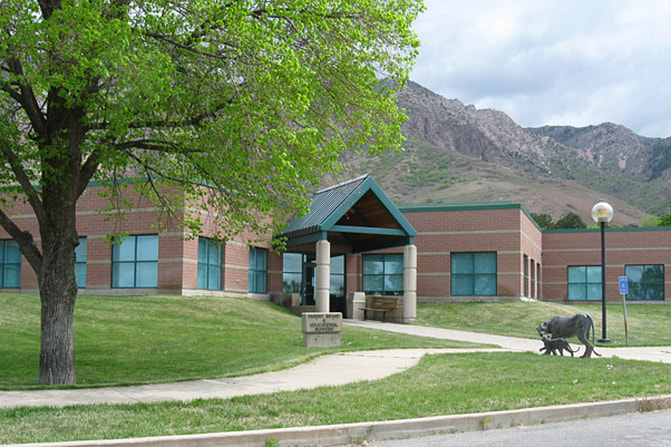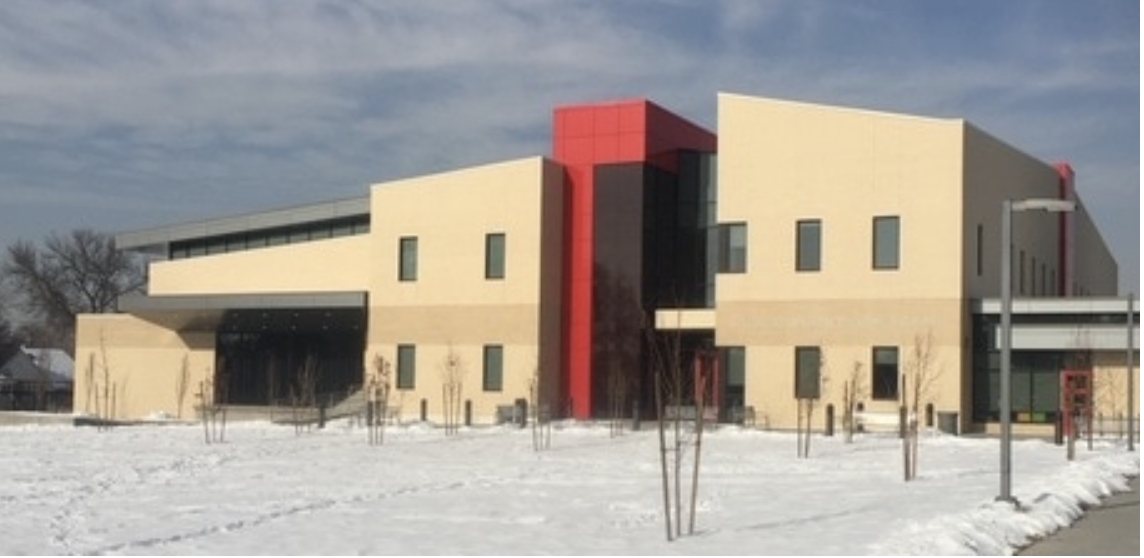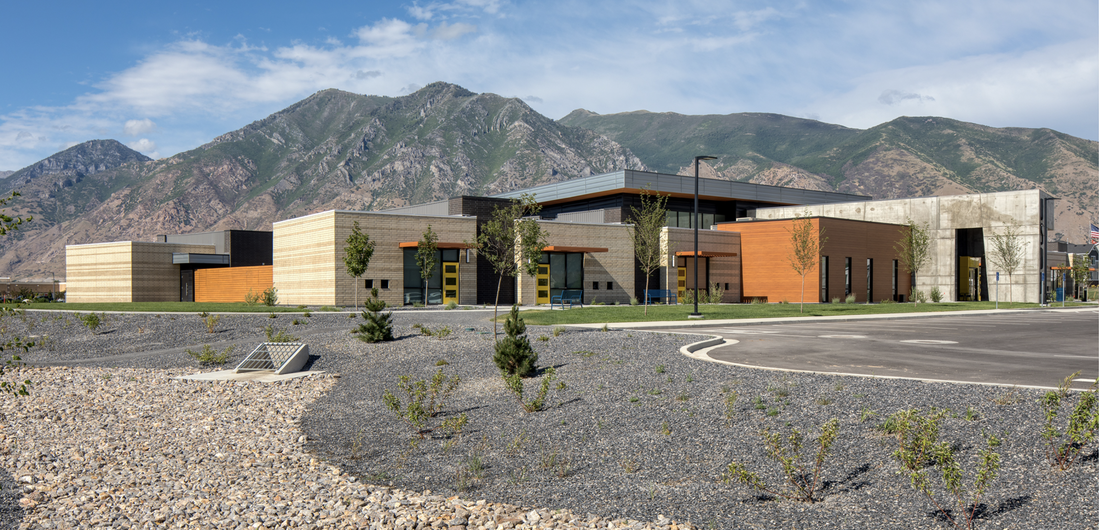A Brief History of the
Utah School for the Deaf
Compiled & Written by Jodi Becker Kinner
Edited by Valerie G. Kinney & Bronwyn O'Hara
Published in 2014
Updated in 2024
Edited by Valerie G. Kinney & Bronwyn O'Hara
Published in 2014
Updated in 2024
Author's Note
As a community historian, I've noticed a common misconception among Deaf history researchers that Henry C. White was the founder of the Utah School for the Deaf in Salt Lake City, Utah, in 1884. However, this is not the case. William Wood and John Beck, both parents of Deaf children, established the school by starting a classroom at the University of Deseret (now the University of Utah), which later grew into the Utah School for the Deaf, as detailed in the following section. It was Dr. John R. Park, president of the University of Dessert, who appointed Henry, a Gallaudet graduate, as principal of the Utah School for the Deaf upon the recommendation of Dr. Edward M. Gallaudet, president of Gallaudet College. William Wood and John Beck's efforts convinced the Utah Legislature to establish the school as a state university department, and it opened its doors on August 26, 1884, a historically significant date. I hope this clarification helps you understand the historical importance of the Utah School for the Deaf. Please feel free to read the attached articles for more details.
Hope this helps,
Jodi Becker Kinner
Hope this helps,
Jodi Becker Kinner
1884: In 1884, the Utah School for the Deaf was established, a significant development in the history of deaf education in Utah. This landmark event took place at the University of Deseret, later renamed the University of Utah, in Salt Lake City. The school was founded by John Beck and William Wood, who were parents of Deaf children, recognized the need for specialized education for the deaf and took a proactive role in establishing the Utah School for the Deaf, a shining example of their commitment to providing education for all.
With the establishment of the Utah School for the Deaf on the University of Deseret campus in Salt Lake City, Utah, and the passage of the appropriation bill, the responsibility of setting up the school fell on the capable shoulders of Dr. John Rocky Park, the president of the University of Deseret. Dr. Park's relentless dedication and determination led him to search for a qualified Deaf teacher in the territory, and when that proved unsuccessful, he embarked on a journey to the East in 1884. He met Dr. Edward Miner Gallaudet, president of Gallaudet College, who recommended Henry C. White, a Boston-based Deaf man and a graduate of Gallaudet College. Acting on this recommendation, Dr. Park appointed Mr. White as the principal and teacher at the Utah School for the Deaf (The Utah Eagle, February 1922; Evans, 1999). Henry C. White did not found the Utah School for the Deaf, but he is recognized for his role in managing and sustaining it, which is still operational today, despite facing financial constraints and a lack of support from the hearing community.
On August 26, 1884, a room at the University of Deseret became the home of the Utah School for the Deaf, a beacon of hope for the Deaf community in Utah. Elizabeth Wood, the Deaf daughter of William Wood, who had been attending the Colorado School for the Deaf, joined Professor White on the first day of class (Fay, Histories of American Schools for the Deaf, 1817–1893). Shortly after, John Beck's three Deaf sons, Joseph, John, and Jacob, who were attending the California School for the Deaf, also joined the class (Evans, 1999). Professor Henry C. White, a visionary leader, was the school's first principal and served as a teacher, principal, and head teacher until 1890, shaping the school's early years with his dedication and expertise (Fay, 1893; Clarke, 1897; Metcalf, 1900; The Utah Eagle, February 1922; Pace, 1946).
1886-1887: In 1886-87, Deaf Professor Henry C. White boarded the Deaf students in his Salt Lake City home at his own expense, as shown in the picture below.
This picture is a front view of the Main Building, with the Annex Building in the background. The Main Building was originally built as a territorial reform school and was still in operation when this photograph was taken. All the individuals in the picture were students of the reform school at that time. In 1896, the reform school was renamed the Utah School for the Deaf and Blind.
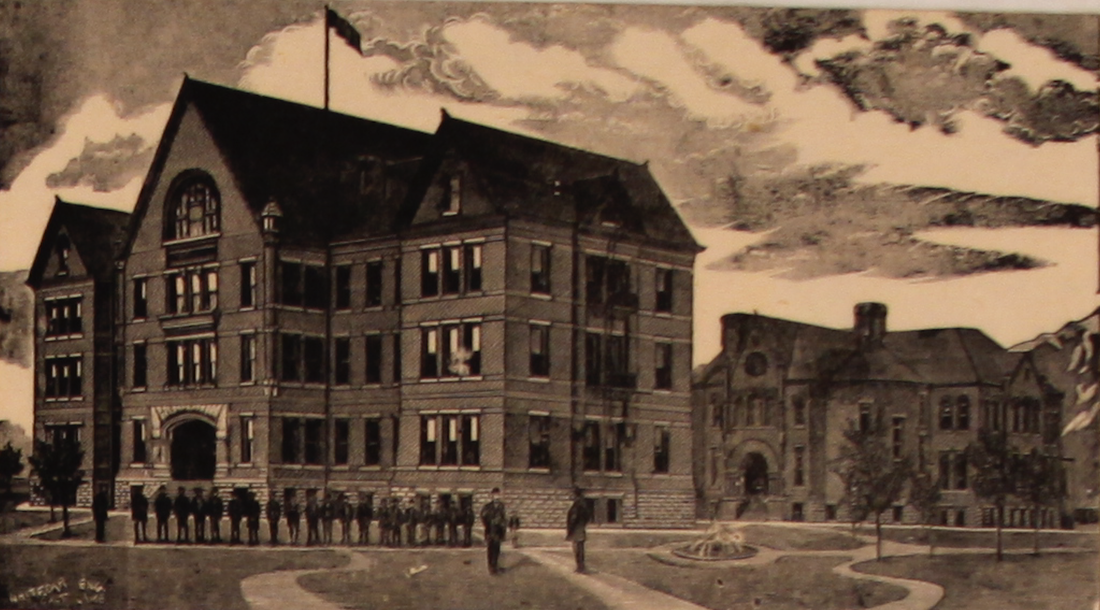 Territorial Reform School, Ogden, Utah
Territorial Reform School, Ogden, Utah
1896: In 1896, when Utah became a state, the Territorial Reform School was converted by the legislature into the Utah School for the Deaf. This school was established on 57 acres of land in Ogden on September 15, 1896. For the first time, a school for blind students was added, and the institution was renamed Utah School for the Deaf and Blind.
The picture attached shows the Main Building of the Utah School for the Deaf in Ogden, Utah, with the Annex Building located at the back of the Main Building.
The picture attached shows the Main Building of the Utah School for the Deaf in Ogden, Utah, with the Annex Building located at the back of the Main Building.
Martha Hughes Cannon, an extraordinary individual in our history, was not only a doctor, suffragist, and public health advocate but also the nation's first female state senator. Her role as a senator and board of trustee of the Utah Schools for the Deaf and Blind was equally remarkable, where she introduced two pivotal bills that significantly shaped the education and healthcare sectors. The first, the 'Act Providing for Compulsory Education of Deaf, Dumb, and Blind Citizens' of 1896, mandated attendance at the Utah School for the Deaf and Blind in Ogden, Utah, ensuring access to education for all. The second, the 'Act of Authorizing the Erection of a Hospital Building for the Utah State School for the Deaf and Dumb' in 1899, led to the construction of the hospital building on campus, improving healthcare services for the community and showcasing her unwavering commitment to healthcare advocacy (Martha Hughes Cannon, Utah Division of Archives and Records Services, April 9, 2020; Martha Hughes Cannon, Wikipedia, April 20, 2024).
During Martha's tenure on the Board of Trustees in 1896, a significant effort was made to address the lack of a law requiring Deaf and Blind children to attend the state institution. Martha and her board members urgently wrote a letter to the Utah governor and legislature, requesting that these children be educated at the state institute rather than in public schools. Their letter specifically recommended a legislative requirement for these children's attendance at the state institution, emphasizing the life-changing impact of specialized education. The report of the Utah State School for the Deaf and Dumb and the State School for the Blind, 1896, as detailed in the section below, provides a clearer picture of the content of this letter and its impact (Report of the Utah State School for the Deaf and Dumb and the State School for the Blind, 1896). After being elected as a senator, Martha continued her advocacy, spearheading a proposal for a mandatory school bill, which was successfully passed in 1896, bringing about positive change for Deaf and Blind children.
Utah Governor Heber Wells, who endorsed the first mandatory school bill, acknowledged Martha's work. The community also recognized her efforts. Her appointment to the board of trustees of the Utah School for the Deaf and the Blind reflected her dedication. Martha's commitment to Deaf and Blind education extended beyond her political career. She even sponsored the second bill to build a hospital at the Utah School for the Deaf and Blind. After serving one term, Dr. Martha Hughes Cannon continued to serve on the board of the Utah School for the Deaf and the Blind for two terms, leaving a lasting legacy. If you have ever received care at the infirmary during your illness, you owe her a debt of gratitude!
A significant event took place in 2024 when the U.S. Capitol in Washington, D.C., installed a statue of Dr. Martha Hughes Cannon, a key figure in Utah's suffrage movement. This statue represents Dr. Martha Hughes Cannon's achievements and symbolizes Utah's important role in the national suffrage movement and its enduring dedication to gender equality. It is a source of inspiration, reminding us of our achievements and the ongoing work ahead.
A significant event took place in 2024 when the U.S. Capitol in Washington, D.C., installed a statue of Dr. Martha Hughes Cannon, a key figure in Utah's suffrage movement. This statue represents Dr. Martha Hughes Cannon's achievements and symbolizes Utah's important role in the national suffrage movement and its enduring dedication to gender equality. It is a source of inspiration, reminding us of our achievements and the ongoing work ahead.
The Main Building in the picture below was Superintendent Frank M. Driggs and his wife's home before their campus home was built in 1901-02.
1954: In 1954, a new Administration Classroom Building was constructed in front of the previous Main Building at Utah Schools for the Deaf and the Blind in Ogden, Utah. Soon after the new Main Building, as shown in the picture below, was completed, the old one was demolished.
1956: In the Salt Lake area of Utah, parents of Deaf children collaborated with the Stewart Training School, a training school for teachers based at the University of Utah, to establish a local oral day school, as seen in the picture below. The Stewart Training School opened its doors in the fall of 1956 to provide an oral classroom for Deaf students.
In Utah, mainstreaming became a popular concept that led to expanding outreach programs. One of the parents, Paul Williams Hodson, had a son named Jonathon, who was five years old at the time. Jonathon remembers that his teacher at the school was Miss Hunt, who later went on to teach at Riley Elementary School (Jonathon Hodson, personal communication, January 31, 2022). The Stewart Training School, a research facility, provided early education to Deaf children using speech and listening skills instead of sign language. This method, known as aural/oral training or oral deaf education, aimed to improve the children's speaking and listening skills (The Utah Eagle, October & November 1960).
In Utah, mainstreaming became a popular concept that led to expanding outreach programs. One of the parents, Paul Williams Hodson, had a son named Jonathon, who was five years old at the time. Jonathon remembers that his teacher at the school was Miss Hunt, who later went on to teach at Riley Elementary School (Jonathon Hodson, personal communication, January 31, 2022). The Stewart Training School, a research facility, provided early education to Deaf children using speech and listening skills instead of sign language. This method, known as aural/oral training or oral deaf education, aimed to improve the children's speaking and listening skills (The Utah Eagle, October & November 1960).
1959: In 1959, the Utah School for the Deaf introduced an Extension Division to provide Deaf students with the opportunity to attend classes closer to their homes. With time, the Extension Divisions were established in different regions of Utah to offer a day program to Deaf children living in heavily populated areas.
1960s: Under the leadership of Dr. Grant B. Bitter, a renowned oral and mainstream education advocate, Utah's movement to mainstream all Deaf children in the 1960s played a significant role, earning him the title of 'Father of Mainstreaming.' Dr. Bitter championed mainstreaming for all Deaf children, leading to its widespread acceptance in 1975 with the passage of Public Law 94-142, now known as the Individuals with Disabilities Education Act. His daughter, Colleen, was born deaf in 1954, which inspired his dedication to the advancement of both oral and mainstream education.
In 1962, the Utah Council for the Deaf, which favored an oral method of instruction, successfully advocated for implementing the dual-track program, commonly known as the "Y" system, at the Utah School for the Deaf (The UAD Bulletin, Fall-Winter 1962). It is believed that Dr. Bitter was a member of this council. This program offered an oral program in one department and a simultaneous communication program, which was replaced by a combined system in another (The Utah Eagle, February 1968; Gannon, 1981). The newly hired superintendent, Robert W. Tegeder, accepted the parents' proposals and initiated changes to the school system (The UAD Bulletin, Fall-Winter, 1962; Grant Bitter: Everett L. Cooley Oral History Project, March 17, 1987). The Utah State Board of Education approved this policy reform on June 14, 1962, with support from the Special Study Committee on Deaf Education (The Ogden Standard-Examiner, June 14, 1962; Wight, The Ogden Standard-Examiner, October 19, 1970). This new program had a significant impact on the lives of Deaf students and their families.
The dual-track program changed its approach to potential teachers from sign language to oral communication. It prioritized speech as the primary mode of communication for Deaf students in classrooms. The administrators at the Utah School for the Deaf considered the dual-track program to be more advantageous than a single-track system (The Utah Eagle, February 1968; Wight, The Ogden Standard-Examiner, October 19, 1970). According to them, the oral program required a "pure oral mindset." In 1968, the Utah School for the Deaf was one of the few residential schools in the country to offer an exclusively oral program for elementary students (The Utah Eagle, February 1968). By 1973, the Utah School for the Deaf was the only school in the United States that provided parents and Deaf students with both methods of communication through the dual-track system (Laflamme, The Ogden Standard-Examiner, September 5, 1973).
In 1962, the Utah Council for the Deaf, which favored an oral method of instruction, successfully advocated for implementing the dual-track program, commonly known as the "Y" system, at the Utah School for the Deaf (The UAD Bulletin, Fall-Winter 1962). It is believed that Dr. Bitter was a member of this council. This program offered an oral program in one department and a simultaneous communication program, which was replaced by a combined system in another (The Utah Eagle, February 1968; Gannon, 1981). The newly hired superintendent, Robert W. Tegeder, accepted the parents' proposals and initiated changes to the school system (The UAD Bulletin, Fall-Winter, 1962; Grant Bitter: Everett L. Cooley Oral History Project, March 17, 1987). The Utah State Board of Education approved this policy reform on June 14, 1962, with support from the Special Study Committee on Deaf Education (The Ogden Standard-Examiner, June 14, 1962; Wight, The Ogden Standard-Examiner, October 19, 1970). This new program had a significant impact on the lives of Deaf students and their families.
The dual-track program changed its approach to potential teachers from sign language to oral communication. It prioritized speech as the primary mode of communication for Deaf students in classrooms. The administrators at the Utah School for the Deaf considered the dual-track program to be more advantageous than a single-track system (The Utah Eagle, February 1968; Wight, The Ogden Standard-Examiner, October 19, 1970). According to them, the oral program required a "pure oral mindset." In 1968, the Utah School for the Deaf was one of the few residential schools in the country to offer an exclusively oral program for elementary students (The Utah Eagle, February 1968). By 1973, the Utah School for the Deaf was the only school in the United States that provided parents and Deaf students with both methods of communication through the dual-track system (Laflamme, The Ogden Standard-Examiner, September 5, 1973).
As shown in the picture above,
the "Y" System Program took place at the Main Building of the Utah School for the Deaf. The Oral Department was on the left, and the Simultaneous Department was on the right
(Utahn, 1957).
the "Y" System Program took place at the Main Building of the Utah School for the Deaf. The Oral Department was on the left, and the Simultaneous Department was on the right
(Utahn, 1957).
1969: In January 1969, the new facilities for the blind school were completed in another location. Since then, the Deaf school has been located at 20th Street and Monroe Avenue, while the blind school has been located at 7th Street and Harrison Boulevard.
1970: The Utah Deaf community and parents who supported sign language fought against the "Y" system for almost a decade, but nobody listened, especially after the 1962 student protest. In another round of the students' 1969 walkout protest, the Utah State Board of Education finally approved a new policy to replace the "Y" system with a two-track program. This program gave parents a choice between the oral method and the total communication method of instruction for a Deaf child aged 2 1/2 to 21 years. Dr. Jay J. Campbell, a crucial ally of the Utah Deaf community, supervised the program. Dr. Campbell oversaw the Utah School for the Deaf (Kenneth L. Kinner, personal communication, May 14, 2011; Recommendations on Policy for the Utah School for the Deaf, 1970; Deseret News, December 29, 1970). Despite the new program, Dr. Bitter remained a staunch proponent of oralism and mainstreaming. As the number of mainstreamed Deaf students increased, the USD alums were heartbroken to see the school and deaf education progressively decline.
1970: The Utah Deaf community and parents who supported sign language fought against the "Y" system for almost a decade, but nobody listened, especially after the 1962 student protest. In another round of the students' 1969 walkout protest, the Utah State Board of Education finally approved a new policy to replace the "Y" system with a two-track program. This program gave parents a choice between the oral method and the total communication method of instruction for a Deaf child aged 2 1/2 to 21 years. Dr. Jay J. Campbell, a crucial ally of the Utah Deaf community, supervised the program. Dr. Campbell oversaw the Utah School for the Deaf (Kenneth L. Kinner, personal communication, May 14, 2011; Recommendations on Policy for the Utah School for the Deaf, 1970; Deseret News, December 29, 1970). Despite the new program, Dr. Bitter remained a staunch proponent of oralism and mainstreaming. As the number of mainstreamed Deaf students increased, the USD alums were heartbroken to see the school and deaf education progressively decline.
1991: On October 1, 1991, the groundbreaking ceremony for a new facility for the Utah Schools for the Deaf and the Blind was held on the campus at 742 Harrison Boulevard in Ogden, Utah.
1993: Two years later in 1993, the old Utah School for the Deaf campus was sold to the Ogden School District by the Utah State Board of Education, and both the Utah School for the Deaf and the Utah School for the Blind were merged. The new main Utah Schools for the Deaf and the Blind campus was built on the new 13.5-acre campus at 742 Harrison Blvd, as shown in the picture above.
1999: In 1999, the Utah Association for the Deaf's Bi-Bi Committee, led by Minnie Mae Wilding-Diaz, a Deaf parent of three Deaf children, along with Jeff Allen, a hearing parent with a Deaf daughter, searched for a quality educational program for Deaf children in Utah. Eventually, they founded Jean Massieu School of the Deaf, a public charter school in Salt Lake City, Utah, which offered an ASL/English bilingual program. The school was named after Jean Massieu, a French Deaf teacher.
2005: In 2005, Joe Zeidner, a hearing parent of a Deaf daughter, made legislative efforts on behalf of the Utah Deaf Education and Literacy, Inc. This led to the merger of Jean Massieu School of the Deaf with Utah Schools for the Deaf and the Blind in the same year.
1993: Two years later in 1993, the old Utah School for the Deaf campus was sold to the Ogden School District by the Utah State Board of Education, and both the Utah School for the Deaf and the Utah School for the Blind were merged. The new main Utah Schools for the Deaf and the Blind campus was built on the new 13.5-acre campus at 742 Harrison Blvd, as shown in the picture above.
1999: In 1999, the Utah Association for the Deaf's Bi-Bi Committee, led by Minnie Mae Wilding-Diaz, a Deaf parent of three Deaf children, along with Jeff Allen, a hearing parent with a Deaf daughter, searched for a quality educational program for Deaf children in Utah. Eventually, they founded Jean Massieu School of the Deaf, a public charter school in Salt Lake City, Utah, which offered an ASL/English bilingual program. The school was named after Jean Massieu, a French Deaf teacher.
2005: In 2005, Joe Zeidner, a hearing parent of a Deaf daughter, made legislative efforts on behalf of the Utah Deaf Education and Literacy, Inc. This led to the merger of Jean Massieu School of the Deaf with Utah Schools for the Deaf and the Blind in the same year.
2008: In 2008, the Jean Massieu School of the Deaf merged with the Utah School for the Deaf's Total Communication program. Before the merger, most Total Communication teachers had received education from Utah State University's Deaf Education program, which focused on an ASL/English Bilingual approach. Following the merger, the Total Communication teachers were given the opportunity to incorporate an ASL/English bilingual approach in their classrooms.
According to Michelle Tanner, a Total Communication Program teacher, principal of the Jean Massisu School of the Deaf, and Associate Superintendent of the Utah School for the Deaf, the merger of two schools had a positive impact on the students. The merger increased the number of students, which improved the instructional atmosphere and the peer group of students. This, in turn, aided in language development and led to a more effective ASL/English bilingual classroom. Michelle Tanner had always dreamed of this merger and had lobbied for it (Michelle Tanner, personal communication, July 8, 2011).
2010: In January 2010, the teachers and students from the Jean Massieu School of the Deaf, along with some other USDB programs, moved to a new location at 1655 East 3300 South in Salt Lake City, Utah, as shown in the photos above and below. After facing a decade of frustration and repeated denials from the Utah legislature, they finally had a place they could call home.
According to Michelle Tanner, a Total Communication Program teacher, principal of the Jean Massisu School of the Deaf, and Associate Superintendent of the Utah School for the Deaf, the merger of two schools had a positive impact on the students. The merger increased the number of students, which improved the instructional atmosphere and the peer group of students. This, in turn, aided in language development and led to a more effective ASL/English bilingual classroom. Michelle Tanner had always dreamed of this merger and had lobbied for it (Michelle Tanner, personal communication, July 8, 2011).
2010: In January 2010, the teachers and students from the Jean Massieu School of the Deaf, along with some other USDB programs, moved to a new location at 1655 East 3300 South in Salt Lake City, Utah, as shown in the photos above and below. After facing a decade of frustration and repeated denials from the Utah legislature, they finally had a place they could call home.
2011: In 2011, the ASL/English Bilingual Program at the Utah Schools for the Deaf and the Blind in Ogden, Utah, was named the "Kenneth Burdett School of the Deaf" in honor of Kenneth C. Burdett. Kenneth was an alumnus of the school, having graduated in 1929, and later became a teacher at the Utah School for the Deaf. He had a long history connected to the school, serving four decades from 1934 to 1974. While at the Utah School for the Deaf, Kenneth served in various roles, including as a student, boy's supervisor, head basketball coach, athletic director, teacher, printing instructor, and curriculum coordinator.
2016: On October 6, 2016, the Utah Schools for the Deaf and the Blind campus in Salt Lake City, Utah, dedicated their new Education Center., as shown below. The event included a grand opening and ribbon-cutting ceremony that honored C. Mark Openshaw, a former Utah State Board of Education member. The center consists of offices for administrators and rooms for preschool classes for Listening and Spoken Language and blind students. The address of the building is 1655 East 3300 South Salt Lake City, Utah.
Additionally, the new gym floor inside the C. Mark Openshaw Education Center features an eagle logo designed by Brandon R. Hill, a Deaf individual and graduate of Gallaudet in '03 & '13. The logo was created to represent the school, and its key element was carried over from the USDB Eagle logo.
Additionally, the new gym floor inside the C. Mark Openshaw Education Center features an eagle logo designed by Brandon R. Hill, a Deaf individual and graduate of Gallaudet in '03 & '13. The logo was created to represent the school, and its key element was carried over from the USDB Eagle logo.
2020: In 2020, the ASL/English Bilingual Program located on the Utah Schools for the Deaf and Blind campus in Springville, Utah, was named "Elizabeth DeLong School of the Deaf" in honor of Elizabeth DeLong. She was the first female president of the Utah Association of the Deaf in 1909. Elizabeth graduated from the Utah School for the Deaf in 1897 and from Gallaudet College in 1902. She spent fifteen years as a teacher at the school.





